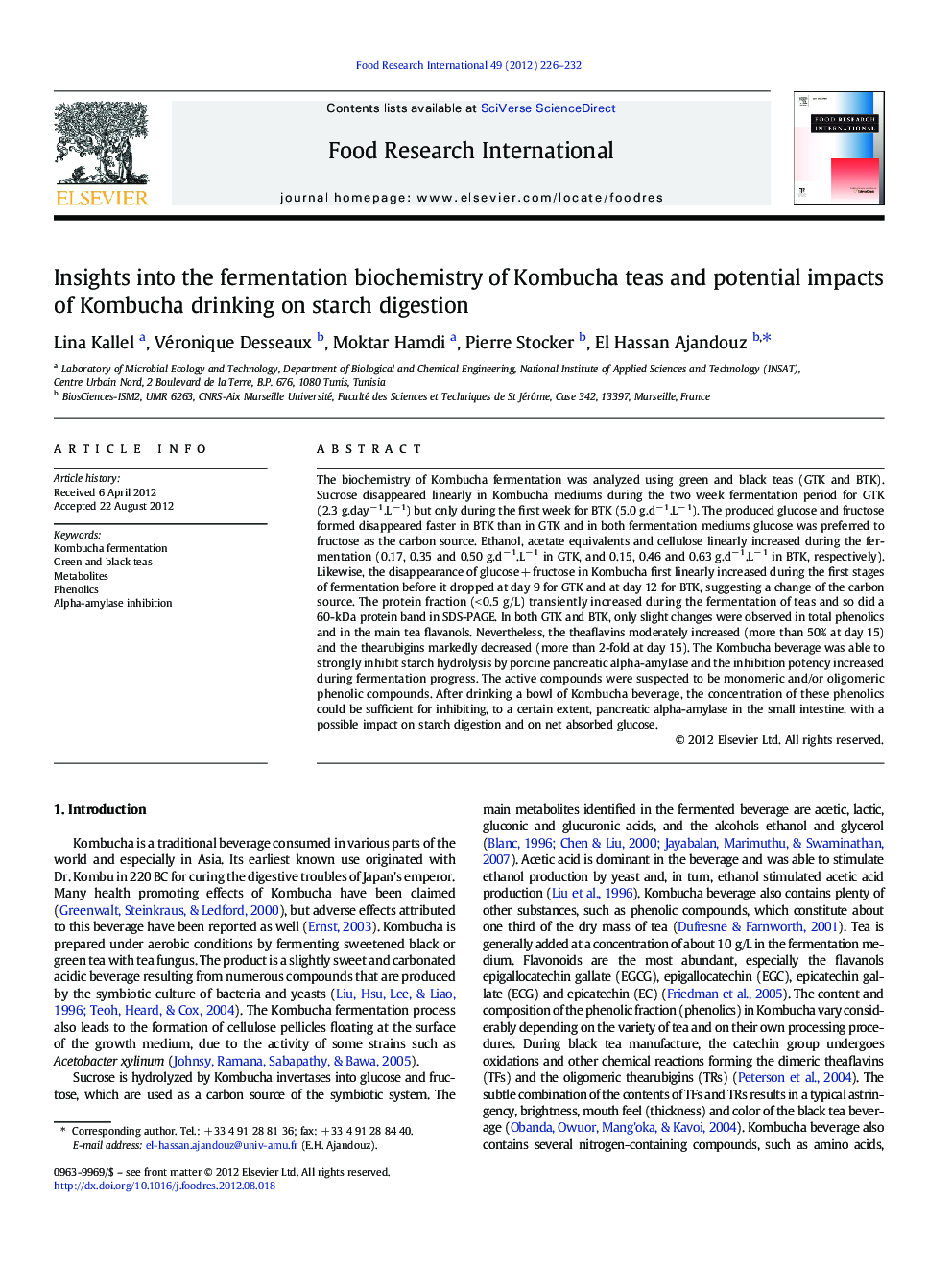| کد مقاله | کد نشریه | سال انتشار | مقاله انگلیسی | نسخه تمام متن |
|---|---|---|---|---|
| 6399063 | 1330689 | 2012 | 7 صفحه PDF | دانلود رایگان |

The biochemistry of Kombucha fermentation was analyzed using green and black teas (GTK and BTK). Sucrose disappeared linearly in Kombucha mediums during the two week fermentation period for GTK (2.3 g.dayâ 1.Lâ 1) but only during the first week for BTK (5.0 g.dâ 1.Lâ 1). The produced glucose and fructose formed disappeared faster in BTK than in GTK and in both fermentation mediums glucose was preferred to fructose as the carbon source. Ethanol, acetate equivalents and cellulose linearly increased during the fermentation (0.17, 0.35 and 0.50 g.dâ 1.Lâ 1 in GTK, and 0.15, 0.46 and 0.63 g.dâ 1.Lâ 1 in BTK, respectively). Likewise, the disappearance of glucose + fructose in Kombucha first linearly increased during the first stages of fermentation before it dropped at day 9 for GTK and at day 12 for BTK, suggesting a change of the carbon source. The protein fraction (< 0.5 g/L) transiently increased during the fermentation of teas and so did a 60-kDa protein band in SDS-PAGE. In both GTK and BTK, only slight changes were observed in total phenolics and in the main tea flavanols. Nevertheless, the theaflavins moderately increased (more than 50% at day 15) and the thearubigins markedly decreased (more than 2-fold at day 15). The Kombucha beverage was able to strongly inhibit starch hydrolysis by porcine pancreatic alpha-amylase and the inhibition potency increased during fermentation progress. The active compounds were suspected to be monomeric and/or oligomeric phenolic compounds. After drinking a bowl of Kombucha beverage, the concentration of these phenolics could be sufficient for inhibiting, to a certain extent, pancreatic alpha-amylase in the small intestine, with a possible impact on starch digestion and on net absorbed glucose.
⺠Metabolic performance of Kombucha is higher with black than with green tea. ⺠Glucose is preferred to fructose as carbon source for Kombucha microflora. ⺠Carbon source switched from sucrose to other sources during Kombucha fermentation. ⺠Theaflavins and thearubigins changed during fermentation but not the other phenolics. ⺠Kombucha diluted 1000-fold performed 50 % inhibition of pancreatic alpha amylase.
Journal: Food Research International - Volume 49, Issue 1, November 2012, Pages 226-232